Tips for Managing Hard Customers Without Losing Patience

Managing difficult customers can be one of the most demanding aspects of a customer service role. You often encounter frustrated individuals whose expectations have not been met, and your ability to stay composed directly impacts their satisfaction. Research shows that retaining existing customers is far more cost-effective than acquiring new ones. A mere 5% boost in retention can increase profits by up to 95%. These figures underline the importance of empathy and professionalism in every interaction.
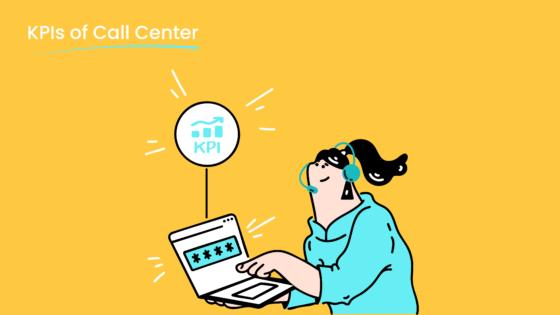
Patience and effective communication are essential tools for resolving tough situations. Tools like Sobot's Voice/Call Center simplify how you manage difficult customers by providing features such as AI-powered voicebots and real-time monitoring. With over 97% customer satisfaction and an 85% resolution rate, Sobot ensures smoother customer support experiences. By leveraging its intelligent solutions, you can focus on how to deal with hard customers without compromising service quality.
Understanding Why Customers Become Difficult
Unmet Expectations and How to Address Them
Unmet expectations often serve as the root cause of difficult customer situations. When customers feel their needs or promises made by a business are not fulfilled, they may react with frustration or disappointment. This reaction can manifest in two phases: initial inaction, where customers tolerate or regret their experience, followed by action, which could lead to either satisfaction or dissatisfaction depending on how the issue is resolved.
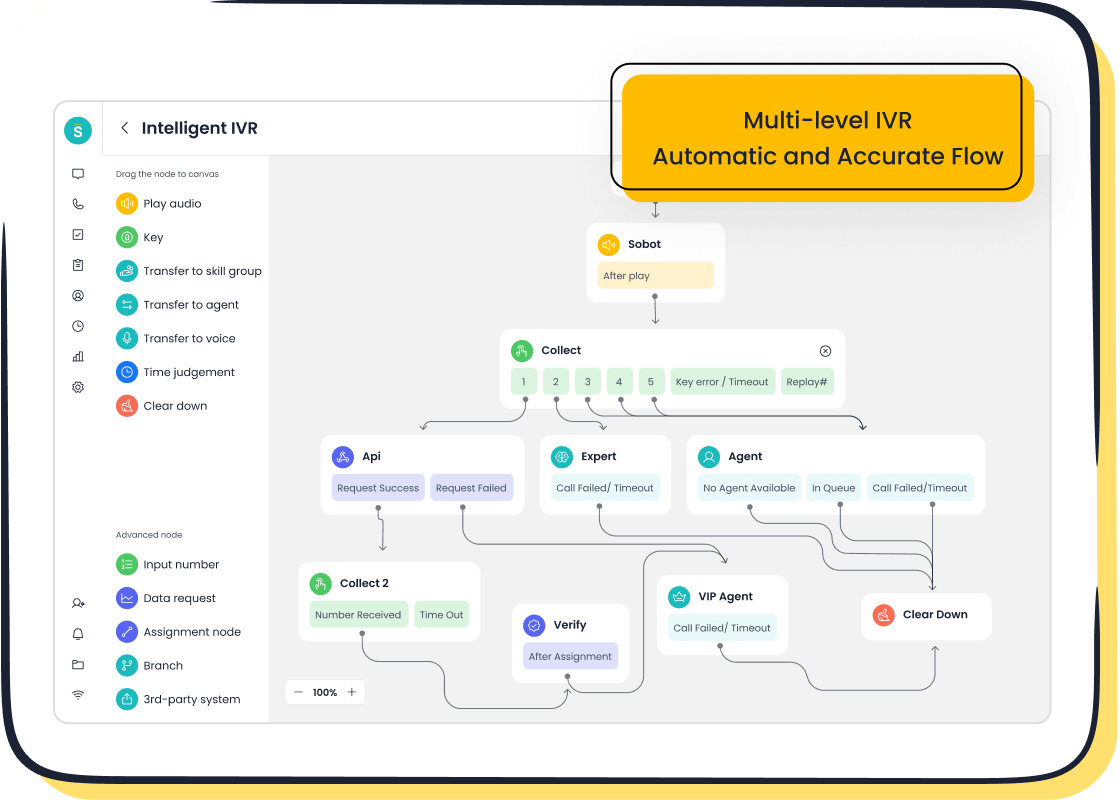
To address unmet expectations effectively, you must focus on proactive communication and transparency. For instance, setting clear expectations about product delivery timelines or service limitations can prevent misunderstandings. Additionally, tools like Sobot's Voice/Call Center enable you to track customer interactions and provide real-time updates, ensuring that customers feel informed and valued. This approach not only improves customer satisfaction but also strengthens customer relationship management by fostering trust and reliability.
- Key Impacts of Unmet Expectations:
- Dissatisfaction and negative reviews.
- Increased customer churn.
- Reduced loyalty and word-of-mouth referrals.
Miscommunication and the Role of Clear Communication
Miscommunication is another common factor that contributes to difficult customer situations. Poor communication can lead to confusion, unmet needs, and even the loss of a customer. Studies reveal that 90% of customers prioritize quick responses and communication quality, while 89% have left a brand due to poor communication.
Clear communication practices can significantly reduce these issues. For example, using a unified workspace like Sobot's Omnichannel Solution allows agents to access all customer data in one place, ensuring consistent and accurate responses. This not only enhances the customer experience but also builds trust and loyalty.
| Statistic | Implication |
|---|---|
| 86% are willing to pay more for better service | Financial benefits of clear communication |
| 68% are more likely to recommend brands with excellent service | Boosts brand reputation and referrals |
| Poor experiences cost companies up to $1.6 billion annually | Financial impact of miscommunication |
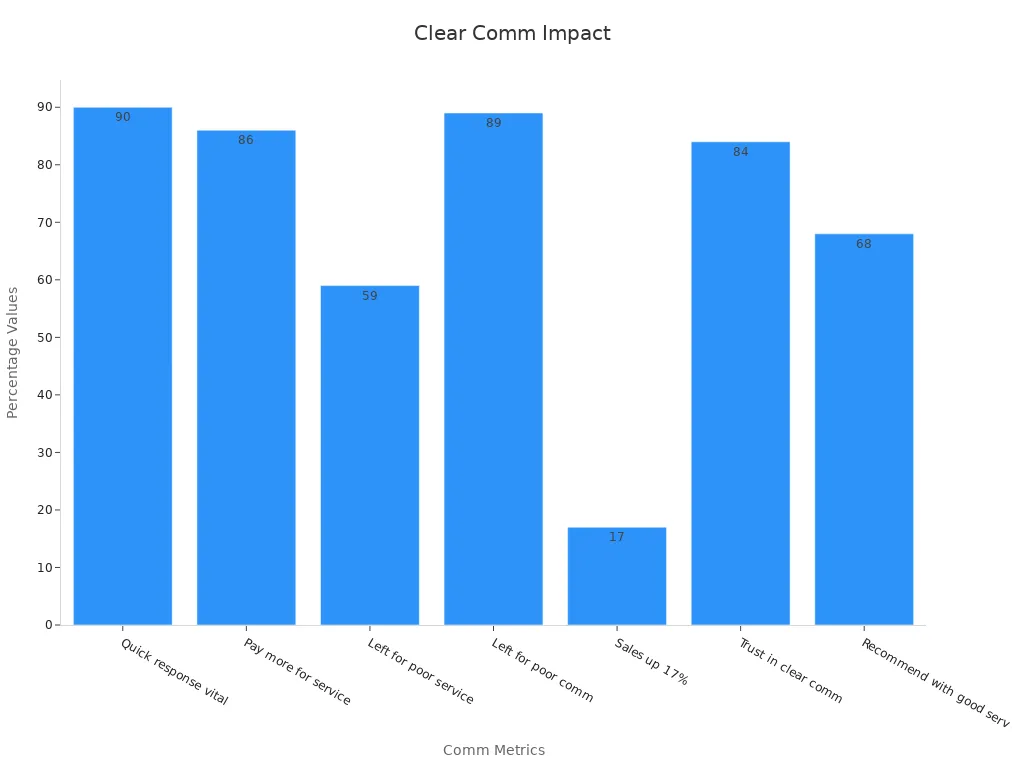
Emotional Stress and Personal Factors Impacting Behavior
Sometimes, a customer's behavior stems from personal stress or external factors unrelated to your service. Emotional stress can amplify their reactions, making them appear more difficult than they truly are. Understanding this context is crucial for managing such situations effectively.
Empathy plays a vital role here. By actively listening and acknowledging their concerns, you can de-escalate tension and create a more positive interaction. For example, Sobot's AI-powered Voicebot can assist in identifying the emotional tone of a customer’s voice, enabling agents to tailor their responses accordingly. This not only improves customer satisfaction but also enhances the overall customer relationship management process.
Tip: Always approach emotionally charged situations with patience and understanding. A calm and composed demeanor can turn a challenging interaction into an opportunity to build trust.
Types of Difficult Customers and How to Deal with Them

Angry Customers: De-escalation Techniques
Angry customers often express frustration through raised voices, harsh words, or even threats. Their anger typically stems from unmet expectations, delays, or perceived poor service. De-escalation is critical in handling such situations effectively. You must remain calm and composed, as reacting emotionally can escalate the conflict further.

Start by acknowledging their concerns. Phrases like, "I understand how this situation has been frustrating for you," can help diffuse tension. Active listening plays a vital role here. Let them vent without interruption, and then summarize their concerns to show you’ve understood. Tools like Sobot’s Voice/Call Center can assist in de-escalation by providing real-time monitoring and AI-powered voicebots that detect emotional tones. These features enable you to tailor your responses and address the root cause of their frustration.
Tip: Always offer actionable solutions. For example, if a product delivery is delayed, provide a clear timeline and compensation options. This demonstrates your commitment to resolving the issue.
Indecisive Customers: Guiding Them Toward Decisions
Indecisive customers often struggle to make choices, even after asking numerous questions. Their hesitation usually arises from confusion or information overload. To guide them effectively, you must simplify the decision-making process.
Begin by identifying their main concerns. Use clarifying questions like, "What features are most important to you?" to uncover their priorities. Avoid using jargon, as it can overwhelm them further. AI-powered tools, such as Sobot’s Omnichannel Solution, can analyze customer behavior and past interactions to offer tailored recommendations. These tools also create interactive decision trees, helping customers visualize their options and make informed choices.
- Best Practices for Handling Indecisive Customers:
- Provide clear comparisons between options.
- Share relevant FAQs and customer reviews to build confidence.
- Avoid pressuring them into a decision.
If indecisiveness persists, involve a colleague or supervisor to offer additional perspectives. This collaborative approach often reassures customers and accelerates their decision-making process.
Demanding Customers: Setting Boundaries Professionally
Demanding customers often expect immediate responses and solutions, sometimes beyond what your service can reasonably provide. Managing demanding customers requires setting clear and professional boundaries while maintaining a positive tone.
Start by defining what you can and cannot do. If a request exceeds agreed-upon terms, explain your limitations politely but assertively. For example, you might say, "I understand your urgency, but this request falls outside the scope of our current agreement. Here’s what I can do to assist you." Offering alternative solutions demonstrates your willingness to help while maintaining boundaries.
Effective time management is crucial when handling demanding customers. Allocate specific blocks of time for their concerns and use tools like Sobot’s Voice/Call Center to track interactions and prioritize tasks. Features such as smart call routing and bulk outbound tasks ensure efficient communication, reducing the risk of burnout for your team.
- Key Strategies for Managing Demanding Customers:
- Communicate deadlines clearly.
- Use time management tools to stay organized.
- Build buffer time for unexpected issues.
Note: Setting boundaries not only protects your productivity but also ensures that customers receive realistic and achievable solutions.
Passive-Aggressive Customers: Responding with Empathy
Passive-aggressive customers often express dissatisfaction indirectly. They might use sarcasm, subtle criticism, or vague complaints instead of addressing their concerns openly. This behavior can be challenging to navigate, but responding with empathy can transform these interactions into opportunities for building trust.
Start by acknowledging their concerns, even if they are not explicitly stated. For example, if a customer says, "I guess I’ll just wait forever for my issue to be resolved," you could respond with, "I understand how frustrating delays can be. Let me check on this for you right away." This approach validates their feelings and encourages open communication.
Empathy plays a crucial role in handling passive-aggressive behavior. Studies show that empathetic responses significantly impact customer loyalty and satisfaction. The table below highlights key findings:
| Evidence Type | Description |
|---|---|
| Study on Customer Loyalty | Empathy fosters sustainable relationships, as noted by Wang et al. (2025). |
| Consumer Experience Report | 73% of consumers value positive experiences when making purchasing decisions. |
| Empathy in Customer Service | Customers who feel heard are more likely to give companies a second chance. |

Using tools like Sobot's Voice/Call Center can enhance your ability to respond empathetically. Its AI-powered voicebot detects emotional tones, helping you tailor your responses to the customer's mood. Additionally, features like real-time monitoring allow supervisors to step in when necessary, ensuring every interaction remains professional and constructive.
Tip: Avoid mirroring passive-aggressive behavior. Instead, maintain a calm and understanding tone to encourage a more productive dialogue.
Customers with Unrealistic Expectations: Managing Expectations Effectively
Customers with unrealistic expectations often demand services or outcomes that exceed what your business can provide. These situations require careful management to avoid dissatisfaction while maintaining professionalism.
Begin by setting clear boundaries. Politely explain what is feasible and what is not. For instance, if a customer expects same-day delivery for a product that typically takes three days, you could say, "I understand the urgency of your request. While same-day delivery isn’t available, I can expedite your order to ensure it arrives as quickly as possible." This approach balances empathy with practicality.
Managing expectations effectively involves proactive communication. Here are some strategies to consider:
- Clarify service limitations upfront to prevent misunderstandings.
- Use simple language to explain processes or timelines.
- Offer alternative solutions that align with the customer’s needs.
Understanding customer expectations is crucial for satisfaction. Research highlights the importance of effective communication in shaping positive perceptions of service. Treating customers with respect and empathy during these interactions can significantly improve their overall experience. Establishing service standards also minimizes uncertainty, making it easier to manage expectations.
Sobot's Omnichannel Solution simplifies this process by consolidating customer data into a unified workspace. This feature enables agents to provide consistent and accurate information, reducing the likelihood of unrealistic demands. Additionally, its AI-driven automation handles repetitive queries, freeing agents to focus on complex issues that require a personal touch.
Note: Always approach these situations with a problem-solving mindset. Offering realistic alternatives demonstrates your commitment to customer satisfaction.
General Tips for Managing Difficult Customers
Active Listening: Understanding Customer Concerns
Active listening is one of the most effective customer service techniques for addressing customer complaints. It involves fully focusing on what the customer is saying, rather than simply waiting for your turn to respond. By practicing active listening, you can uncover the root cause of their concerns and provide tailored solutions.
To implement active listening, start by giving the customer your undivided attention. Avoid interrupting and use verbal cues like "I see" or "That makes sense" to show you are engaged. Reflecting back on what the customer has shared helps them feel understood. For example, you might say, "It sounds like the delay in delivery has caused significant inconvenience. Let me see how I can resolve this for you."
The impact of active listening extends beyond resolving individual issues. Studies show that teams with leaders who actively listen experience a 25% increase in productivity. Additionally, companies that prioritize active listening report a 30% boost in employee engagement. These results highlight the importance of listening not only to customers but also to team members.
Sobot's Voice/Call Center enhances active listening by providing a unified workspace where agents can access customer history and preferences. This feature allows you to address concerns more effectively, ensuring a seamless and personalized experience.
Tip: Always summarize the customer's concerns before offering a solution. This practice ensures clarity and demonstrates that you value their input.
Staying Calm and Composed Under Pressure
Remaining calm under pressure is a critical skill in customer service. When faced with challenging situations, your ability to stay composed directly influences the outcome of the interaction. Customers often mirror the tone and demeanor of the person assisting them, so maintaining a calm presence can help de-escalate tension.
To stay calm, recognize the signs of escalating emotions, such as raised voices or tense body language. Address the situation immediately by acknowledging the customer's frustration and focusing on solutions. For instance, phrases like "I understand how this situation has been frustrating for you" can help diffuse anger.
The benefits of staying calm extend beyond individual interactions. Calm leadership fosters clear decision-making and inspires confidence within teams. Emotional intelligence enables you to assess both personal and customer emotions, building trust and improving team dynamics. The table below summarizes these key points:
| Key Point | Explanation |
|---|---|
| Calm Leadership | Fosters clear decision-making and inspires confidence within teams. |
| Emotional Intelligence | Enables assessment of personal and team emotions, building trust. |
| Team Dynamics | Enhances collaboration and prevents confusion during crises. |
Sobot's AI-powered Voicebot can assist in managing high-pressure situations by detecting emotional tones and suggesting calming responses. This feature ensures that you remain composed, even during the most challenging interactions.
Tip: Use deep breathing techniques or take a brief pause before responding to an angry customer. This small step can help you regain focus and approach the situation with a clear mind.
Using Empathy to Build Trust and Rapport
Empathy is the cornerstone of building trust and rapport with customers. When you listen with empathy, you demonstrate that you genuinely care about their concerns. This approach not only resolves immediate issues but also fosters long-term loyalty.
To practice empathy, start by acknowledging the customer's feelings. For example, if a customer expresses frustration over a delayed order, you could say, "I understand how important it is for you to receive your order on time. Let me check on this for you right away." Reflecting back on what the customer shares helps them feel validated and understood.
Empathy also plays a significant role in influencing purchasing decisions. Research shows that 90% of consumers consider authenticity a key factor when choosing a brand. By showing genuine empathy, you can enhance the customer experience and develop trust.
Sobot's Omnichannel Solution supports empathetic interactions by consolidating customer data into a unified workspace. This feature enables you to provide personalized responses that address the customer's unique needs. Additionally, its AI-driven automation handles repetitive queries, freeing you to focus on building meaningful connections.
Tip: Use phrases like "I can see why this is important to you" to acknowledge the customer's perspective. This simple gesture can make a significant difference in how they perceive your service.
Setting Clear and Professional Boundaries
Establishing clear and professional boundaries is essential when managing difficult customers. Boundaries help you maintain control over interactions while ensuring that both parties understand what is achievable. Without them, you risk overpromising, which can lead to dissatisfaction and burnout.
Start by defining what you can realistically offer. For example, if a customer demands a refund outside your company’s policy, explain the limitations politely but firmly. Use phrases like, "I understand your concern, but our policy states..." to communicate boundaries without sounding dismissive. Offering alternative solutions, such as store credit or expedited support, demonstrates your willingness to help within reasonable limits.
Maintaining boundaries also protects your mental well-being. Research highlights several benefits of setting professional boundaries:
- Clients perceive structured relationships as a sign of credibility, boosting their confidence in your expertise.
- Professionals with strong boundaries experience better mental health, reduced stress, and increased job satisfaction.
- Clear boundaries prevent burnout and compassion fatigue, especially in customer-facing roles.
Sobot’s Voice/Call Center can support you in maintaining these boundaries. Features like smart call routing and automated workflows ensure that customer requests are directed to the right channels, reducing unnecessary strain on your team. Additionally, real-time monitoring allows supervisors to step in when interactions become unmanageable, ensuring professionalism is upheld at all times.
Tip: Always communicate boundaries with empathy. A calm and respectful tone reassures customers that you value their concerns, even when certain requests cannot be fulfilled.
Collaborative Problem-Solving for Better Outcomes
Collaborative problem-solving transforms challenging customer interactions into opportunities for mutual understanding. By involving customers in the resolution process, you empower them to feel heard and valued. This approach not only improves customer satisfaction but also fosters trust and loyalty.
Begin by actively engaging the customer in identifying the issue. Ask open-ended questions like, "What outcome would you consider ideal?" to encourage dialogue. Once you understand their perspective, propose solutions and invite their input. For instance, if a product fails to meet expectations, you could offer a replacement or a discount while asking, "Would this solution work for you?" This collaborative approach ensures that the resolution aligns with their needs.
The benefits of collaborative problem-solving extend beyond individual interactions. Documented outcomes include:
| Outcome | Description |
|---|---|
| Enhanced Creativity | Encourages the free flow of ideas and out-of-the-box thinking. |
| Better Decision-Making | Involves multiple perspectives for comprehensive evaluations of risks and benefits. |
| Improved Implementation | Fosters ownership and commitment to solutions, leading to smoother execution. |
| Strengthened Team Dynamics | Builds trust and improves communication, creating a cohesive team environment. |
| Continuous Learning and Improvement | Provides opportunities to learn from each other and refine problem-solving techniques. |
Sobot’s Omnichannel Solution enhances collaborative problem-solving by consolidating customer data into a unified workspace. This feature allows you to access past interactions, enabling more personalized and effective resolutions. AI-driven automation also handles repetitive tasks, freeing you to focus on complex issues that require a human touch.
Note: Collaboration builds stronger relationships. When customers feel involved in the resolution process, they are more likely to leave with a positive impression of your service.
Advanced Techniques for Handling Challenging Situations
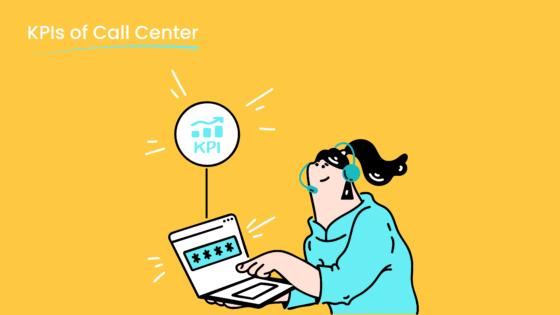
De-escalation Strategies for High-Stress Scenarios
High-stress scenarios often require you to act quickly and decisively to prevent further escalation. The key lies in maintaining control of the conversation while addressing the customer’s concerns. Start by acknowledging their frustration. Phrases like, “I understand this situation has been challenging for you,” can help diffuse tension. Follow this with a calm and solution-focused approach.

Using tools like Sobot’s Voice/Call Center can make this process smoother. Its AI-powered voicebot detects emotional tones, allowing you to adjust your responses in real time. Additionally, features like smart call routing ensure that customers are directed to the right agent, reducing wait times and frustration. These tools empower you to focus on resolving the issue rather than managing emotions.
Tip: Always prioritize clarity when offering solutions. A clear explanation of the next steps can reassure customers and restore their confidence in your service.
Using Humor to Lighten the Mood
Humor, when used appropriately, can transform a tense interaction into a positive experience. It breaks down barriers, reduces defensiveness, and fosters a sense of connection. For example:
- A wife jokingly expresses concern for her husband’s safety while cleaning gutters, leading to shared laughter.
- A playful comment about tipping at dinner diffuses tension, turning a potential argument into a lighthearted moment.
In customer service, humor can interrupt power struggles and promote spontaneity. A simple, lighthearted remark like, “Looks like technology decided to take a coffee break today!” can ease frustration during technical issues. However, always gauge the customer’s mood before using humor to ensure it’s well-received.
Sobot’s AI-powered tools can assist by analyzing emotional tones, helping you determine when humor might be effective. This feature ensures your approach aligns with the customer’s state of mind, enhancing the interaction.
Note: Humor should never undermine the seriousness of the issue. Use it sparingly and only to create a more relaxed atmosphere.
Empowering Customers with Options and Solutions
Empowering customers involves giving them a sense of control over the resolution process. Start by presenting clear options. For instance, if a product is delayed, offer choices like expedited shipping or a discount on the next purchase. This approach demonstrates your commitment to meeting their needs.
Sobot’s Omnichannel Solution simplifies this process by consolidating customer data into a unified workspace. This feature allows you to provide personalized recommendations based on past interactions. Additionally, its AI-driven automation handles repetitive queries, freeing you to focus on offering tailored solutions.
Tip: Always frame options positively. Instead of saying, “We can’t do that,” try, “Here’s what we can do to make this right.” This subtle shift in language can significantly impact how customers perceive your service.
Leveraging Tools Like Sobot's Voice/Call Center for Efficient Communication
Efficient communication is the backbone of excellent customer service. When dealing with difficult customers, having the right tools can make all the difference. Sobot's Voice/Call Center offers a suite of features designed to streamline interactions, reduce response times, and improve overall customer satisfaction.
One of the standout features is smart call routing, which ensures customers are connected to the most suitable agent based on their needs. This reduces wait times and prevents frustration. For example, if a customer calls about a billing issue, the system automatically directs them to a billing specialist. This targeted approach not only saves time but also enhances the customer experience.
Another powerful tool is the AI-powered voicebot. It can handle routine inquiries, such as order status or account updates, allowing your team to focus on more complex issues. According to research, 67% of customers prefer self-service options for simple tasks. By leveraging this feature, you can meet customer expectations while optimizing your team's workload.
Sobot's real-time monitoring and analytics provide valuable insights into call performance. Supervisors can track key metrics like call duration and resolution rates, enabling them to identify areas for improvement. For instance, if a particular issue frequently causes delays, you can address it proactively to enhance efficiency.
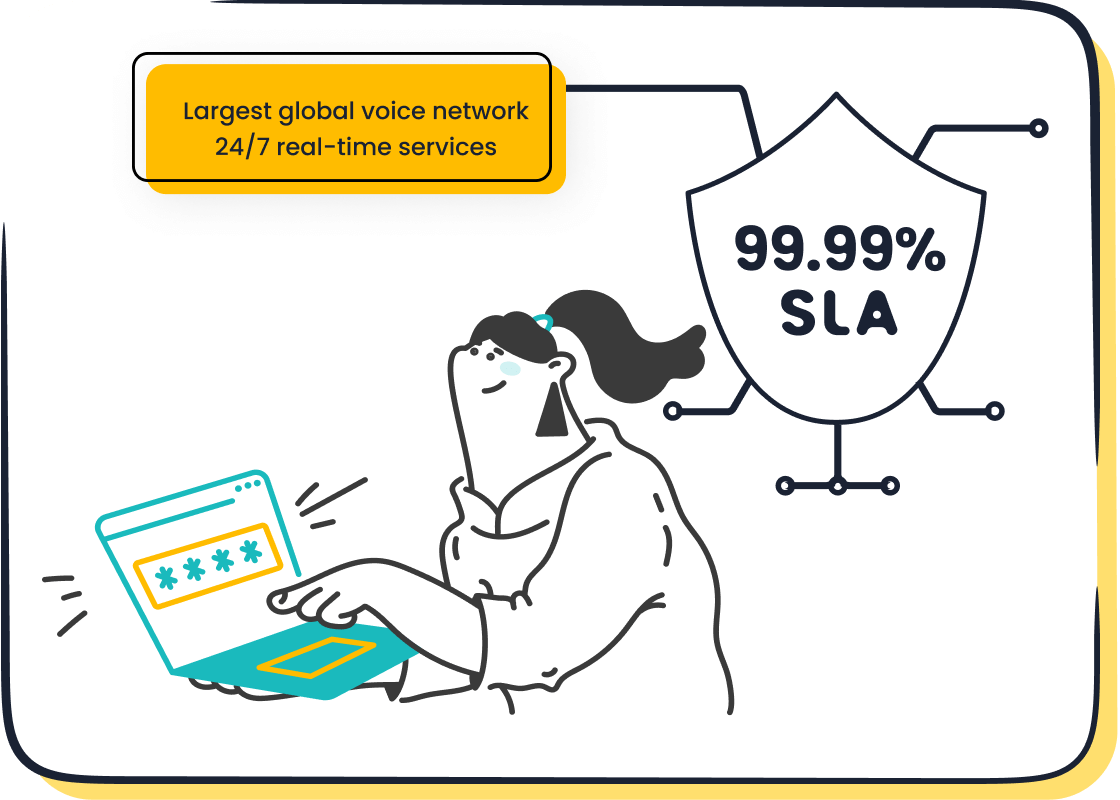
Tip: Use Sobot's unified workspace to access customer history and preferences during calls. This ensures personalized and consistent communication, which builds trust and loyalty.
With a 99.99% system uptime and global network support, Sobot's Voice/Call Center guarantees reliability. Whether you're managing a small business or a large enterprise, these tools empower you to handle challenging customer interactions with confidence and professionalism. Explore more about Sobot's solutions here.
Knowing When to Escalate or Walk Away
Identifying Escalation Triggers in Customer Interactions
Recognizing when to escalate a customer interaction is a critical aspect of conflict resolution. Certain triggers indicate the need for supervisor involvement to ensure a positive outcome. For example, technical issues beyond your expertise or a direct request for a supervisor are clear signs. Emotional cues, such as a customer’s heightened tone or emphatic language, also signal the need for escalation. Advanced monitoring systems, like those offered by Sobot’s Voice/Call Center, can help detect these triggers in real time, streamlining the process.
Proactively addressing these indicators prevents situations from spiraling out of control. If a customer expresses frustration, acknowledge their emotions and assure them that their concerns are being taken seriously. This approach not only demonstrates professionalism but also builds trust. By understanding these triggers, you can create a smoother path toward resolution.
Involving Supervisors or Managers for Resolution
Involving a supervisor can often turn a challenging situation into a successful resolution. Supervisors bring a fresh perspective and authority that can reassure customers. For instance, if a customer feels their issue hasn’t been adequately addressed, escalating the matter shows your commitment to finding a solution. Tools like Sobot’s real-time monitoring allow supervisors to step in seamlessly, ensuring a professional and efficient handoff.
When escalating, provide your supervisor with all relevant details, including the customer’s history and the steps already taken. This preparation ensures a smooth transition and reinforces your professionalism. Customers appreciate this level of care, which can transform a negative experience into a positive one.
Handling Abusive or Unreasonable Behavior Professionally
Dealing with abusive or unreasonable customers requires a balance of empathy and assertiveness. Start by actively listening to their concerns. Acknowledge their emotions without condoning inappropriate behavior. For example, you might say, “I understand you’re upset, and I want to help resolve this issue.” Staying calm and composed is essential for effective conflict resolution.
Set clear boundaries if the behavior persists. Politely but firmly state what is acceptable. For instance, “I’m here to assist, but I need us to maintain a respectful conversation.” If the situation escalates further, follow your company’s protocol for disengaging or involving a supervisor. Sobot’s AI-powered tools can help identify abusive language, allowing you to take appropriate action while maintaining professionalism.
Tip: Always prioritize your well-being. Practicing self-care ensures you remain resilient in high-stress situations.
Maintaining Professionalism While Ending Interactions
Ending customer interactions professionally leaves a lasting impression. It ensures customers feel valued and respected, even after challenging conversations. Your ability to maintain professionalism during this final stage can significantly impact customer satisfaction and loyalty.
Start by summarizing the resolution. Recap the steps taken to address their concerns. For example, you might say, “We’ve expedited your order, and it should arrive by Friday. Is there anything else I can assist you with today?” This approach reassures customers that their issues have been resolved and confirms their satisfaction.
Express gratitude for their patience and feedback. A simple “Thank you for bringing this to our attention” can turn a negative experience into a positive one. Customers appreciate acknowledgment, especially when their concerns lead to improvements in service.
Use tools like Sobot’s Voice/Call Center to streamline this process. Its unified workspace allows you to access customer history and preferences, enabling personalized farewells. Features like call tracking and real-time monitoring ensure interactions end on a high note. For instance, if a customer has expressed frustration earlier, you can tailor your closing remarks to reflect empathy and understanding.
Avoid rushing through the conclusion. Take a moment to confirm that all concerns have been addressed. If unresolved issues remain, offer clear next steps. For example, “I’ll escalate this to our technical team, and they’ll follow up within 24 hours.” This demonstrates your commitment to resolving their concerns fully.
Finally, ensure your tone remains calm and courteous. Even in difficult situations, maintaining professionalism reinforces your credibility and builds trust. Customers often remember how interactions end, so leaving them with a positive impression is crucial.
Tip: Always thank customers for their time, even if the interaction was challenging. Gratitude fosters goodwill and encourages repeat business.
Effectively managing difficult customers requires a combination of patience, empathy, and clear communication. By actively listening, staying composed, and setting professional boundaries, you can turn challenging interactions into opportunities to build trust. Research shows that 91% of unhappy customers leave without complaining, but resolving issues quickly can foster loyalty. For example, Grubhub enhanced its customer service workflow, boosting satisfaction scores from 85% to 90%. This highlights the importance of refining your customer service skills to improve outcomes.
Sobot's Voice/Call Center simplifies this process with tools like AI-powered voicebots and real-time monitoring. These features streamline communication, allowing you to focus on resolving issues effectively. By applying these strategies and leveraging advanced tools, you can enhance your customer service approach while maintaining professionalism.
Tip: Consistently practicing these techniques ensures long-term success in customer interactions.
FAQ
What is the best way to stay calm when managing difficult customers?
Staying calm requires preparation and emotional control. Use deep breathing techniques to reduce stress. Tools like Sobot's Voice/Call Center help by automating routine tasks, allowing you to focus on resolving issues calmly. Its AI-powered voicebot detects emotional tones, guiding you to respond appropriately.
How can Sobot's Voice/Call Center improve customer interactions?
Sobot's Voice/Call Center enhances interactions by offering features like smart call routing and real-time monitoring. These tools reduce wait times and ensure customers connect with the right agents. With a 99.99% uptime, it guarantees reliable communication, improving customer satisfaction and retention rates.
How do I handle customers with unrealistic expectations?
Set clear boundaries and communicate what is feasible. For example, explain service limitations politely and offer alternatives. Sobot's Omnichannel Solution consolidates customer data, enabling you to provide accurate information and manage expectations effectively. This approach builds trust and reduces dissatisfaction.
Why is empathy important in customer service?
Empathy builds trust and rapport. Customers feel valued when you acknowledge their concerns. For instance, Sobot's AI-powered tools analyze emotional tones, helping you tailor responses. Research shows empathetic service increases customer loyalty by 73%, making it a critical skill for managing difficult customers.
Can humor help in de-escalating tense situations?
Yes, humor can lighten the mood when used appropriately. A lighthearted comment, like "Looks like technology took a coffee break," can ease tension. Sobot's AI tools analyze emotional tones, ensuring humor aligns with the customer's mood. Always use humor sparingly to maintain professionalism.
See Also
Enhancing Customer Satisfaction Through Effective Live Chat Strategies
Effective Strategies for Managing Your Live Chat Team
Selecting the Right Social Media Customer Support Tools